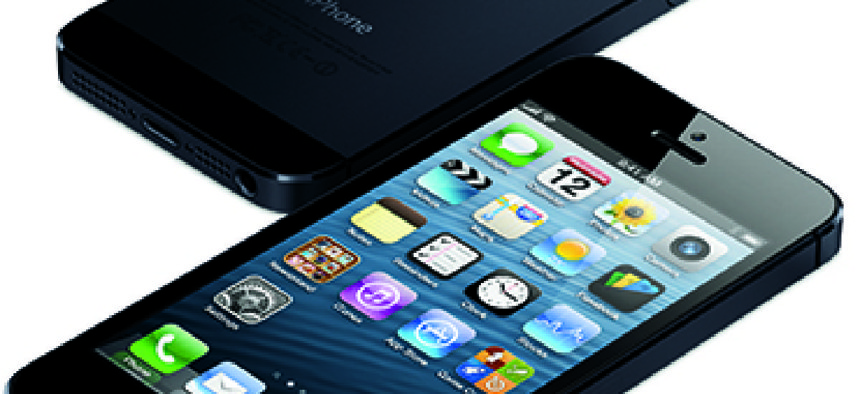Feds take a bite of Apple -- but how much?

Determining the federal market for Apple's iPhone turns out to be pretty hard to do.

Apple's iPhone 5 has become popular in federal agenies. (Photo courtesy of Apple)
Apple appears set to announce two new iPhones on Sept. 10, one an upgrade from its current flagship iPhone 5 handset, and the other an economy model designed to appeal to users in markets where devices aren't subsidized by carriers as part of service contracts.
Apple's iPhone is approved for use across the federal government and a few agencies have made high-profile switches from Blackberry devices to iPhones, including the National Oceanic and Atmospheric Administration, the Bureau of Alcohol Tobacco and Firearms and the Immigrations and Customs Enforcement bureau.
But even practiced observers have a hard time determining the extent to which the iPhone or any particular device is making inroads into the federal market.
A dive into the data provided by USASpending.gov puts the spending on iPhones and iPhone service contracts at $13.1 million since the device was first approved for federal networks in 2010. But this figure is likely far from the mark because it doesn't include devices purchased under government-wide acquisition contracts.
Even the government doesn't have a handle on what devices federal workers are using. Until recently, government purchasing didn't permit access to the kind of real-time activation data that would allow for a device census. The new blanket purchase agreements for wireless services run out of the General Services Administration allows the feds to get a handle on their device holdings, but these are new and offer an incomplete picture.
A survey conducted last November by the Government Business Council found the iPhone lagging behind Android and Blackberry in terms of federal ubiquity, with just 2 percent of respondents expecting to be issued an iPhone in the coming year.
What is clear from the available information is that almost every government agency, to some extent, has adopted the iPhone into its arsenal of approved devices. The Federal Emergency Management Agency has a relatively big appetite for iPhones, with $2.8 million spent on devices and plans. The Department of Defense shelled out $2.4 million. The data doesn't show big spending by agencies that have adopted the iPhone as the device of choice. NOAA spent a reported $200,000 on iPhones and plans, ICE spent about $1.3 million, and there's no spending info available for ATF. This is likely because the actual purchases were made under a larger contract that includes a variety of IT products, not just iPhones.
"Getting to the real spends, that's the Holy Grail," said John Slye, an analyst at contracting research firm Deltek. "The data is not sufficient to get down to that level of granularity." The piecemeal nature of the data reflects a mobility policy in flux. "The lack of evidence belies the fact that they're still working through mobility strategies. The lack of a story becomes the story itself," he said.
The addition of a lower-priced iPhone could sweeten the appeal for some federal users, depending on the capabilities of the device.
However, a bigger driver of iPhone adoption will be the diminution of Blackberry's share of the federal market. Research In Motion, the Canadian firm that owns Blackberry, is looking to sell the device division and its patents.
According to a recent Wall Street Journal story, Chinese firm Lenovo is said to be among the suitors. If a Chinese-owned company acquired Blackberry, it could speed the device's retreat from the federal market.



